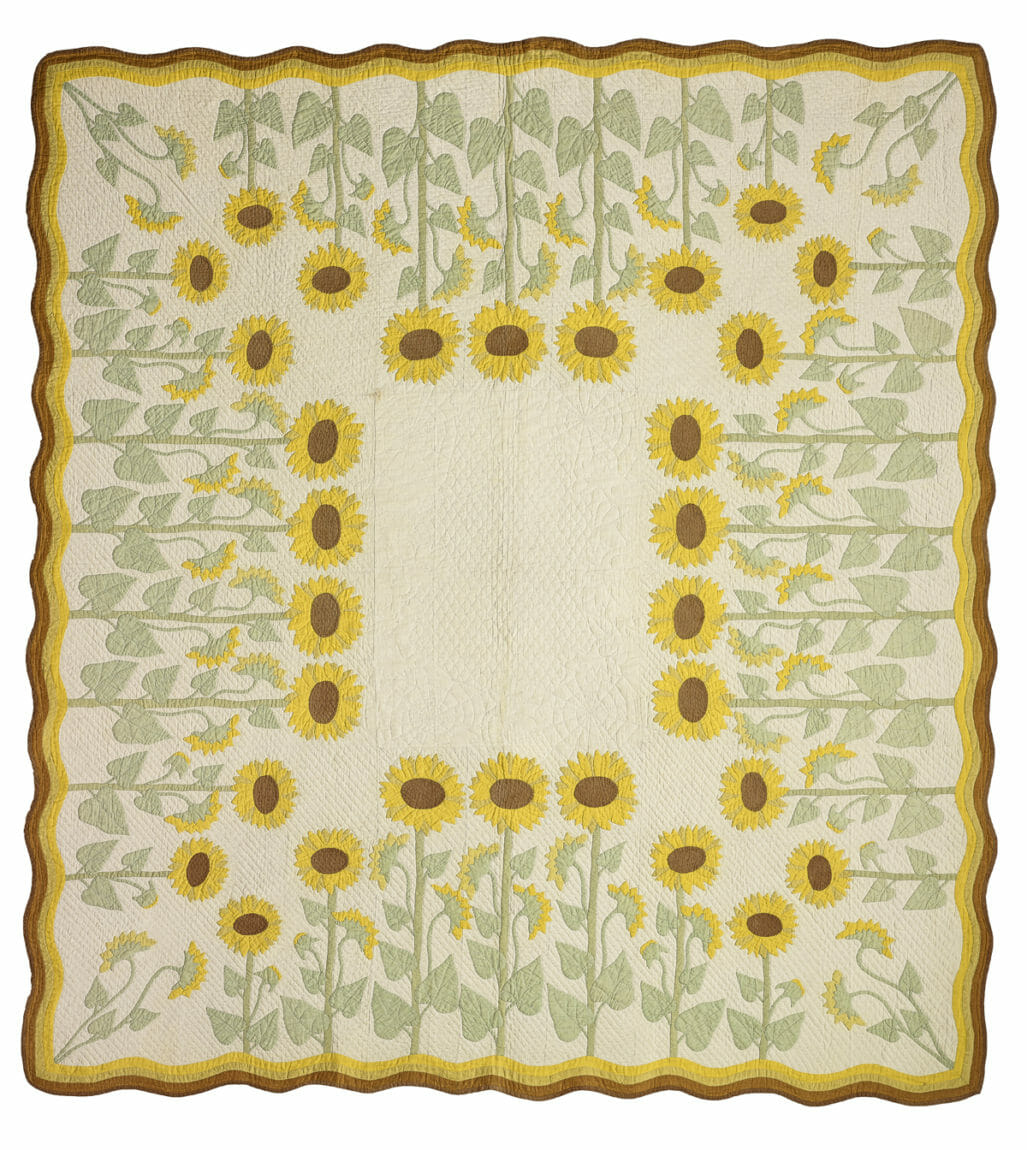
SAQA exhibit celebrates Marie Webster
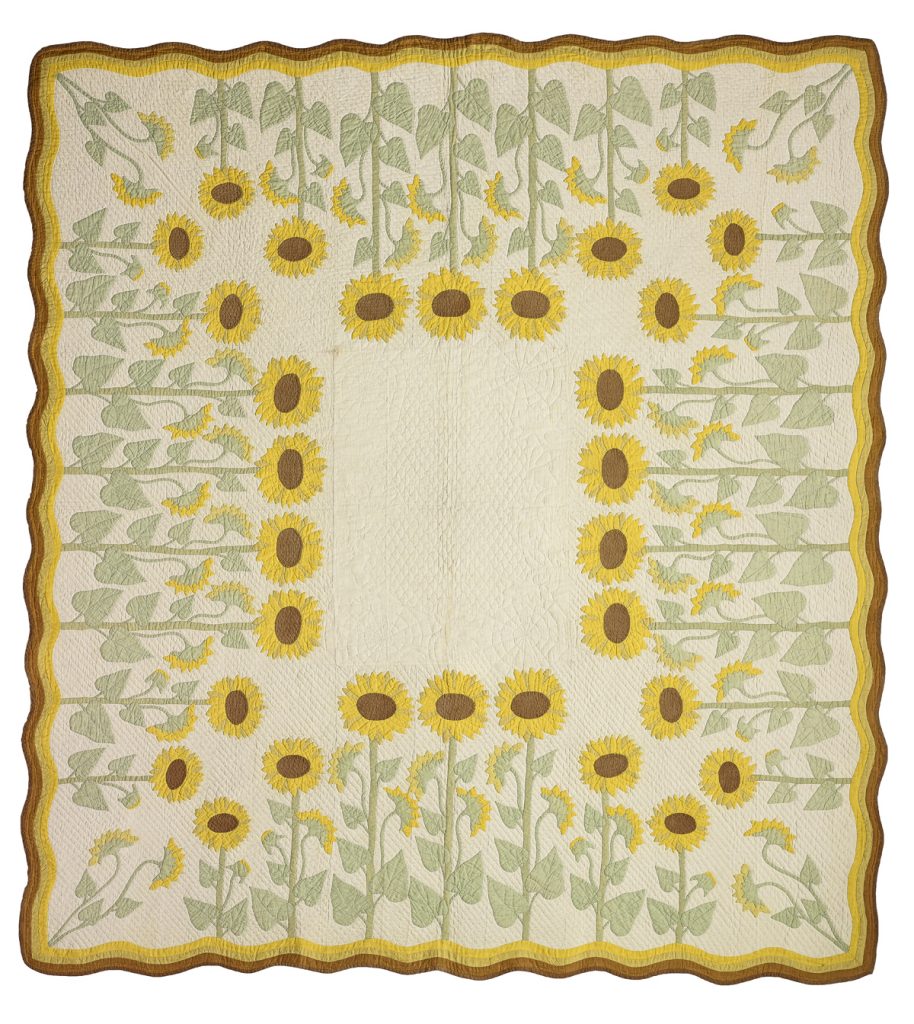
Marie Webster. Never heard that name before? Well quilters today owe a lot to her.
In 1909, she broke with traditional Victorian quilt patterns and created her first applique quilt that was inspired by the Arts and Crafts movement. Her designs, featuring a center medallion typically of flowers, and strong borders caught the eye of Ladies Home Journal and in 1911 she published her first pattern.
Her designs became so popular, that she published a pattern book in 1915, “Quilts, Their Story and How To Make Them” and later started a pattern design company that sold patterns and kits to quilters. And this was all before women even had the right to vote.
“A Joy Forever: Marie Webster Quilts” featuring designs and quilts created by Webster is on display at the Indianapolis Museum Art through January 8, 2017. And SAQA has created a regional exhibition featuring 27 quilts from SAQA members in the Midwest that feature contemporary responses to her work through September 4, 2016.
“You almost never get to see the original work plus work that is based on,” said Kate Lenkowsky, curator of “Dialogues: Contemporary responses to Marie Webster Quilts,” which opened today at the Indianapolis Museum of Art. “The work that is inspired by eight beautiful and elegant work of art from another era. … The contemporary exhibit is really relieved of the necessity of being functional, and therefore the artists are free just to take whatever they want from this and use it in their own work in some way. Either reacting against it, playing with it, changing it, altering it in some way, or just their own take on it, and that’s a wonderful.”
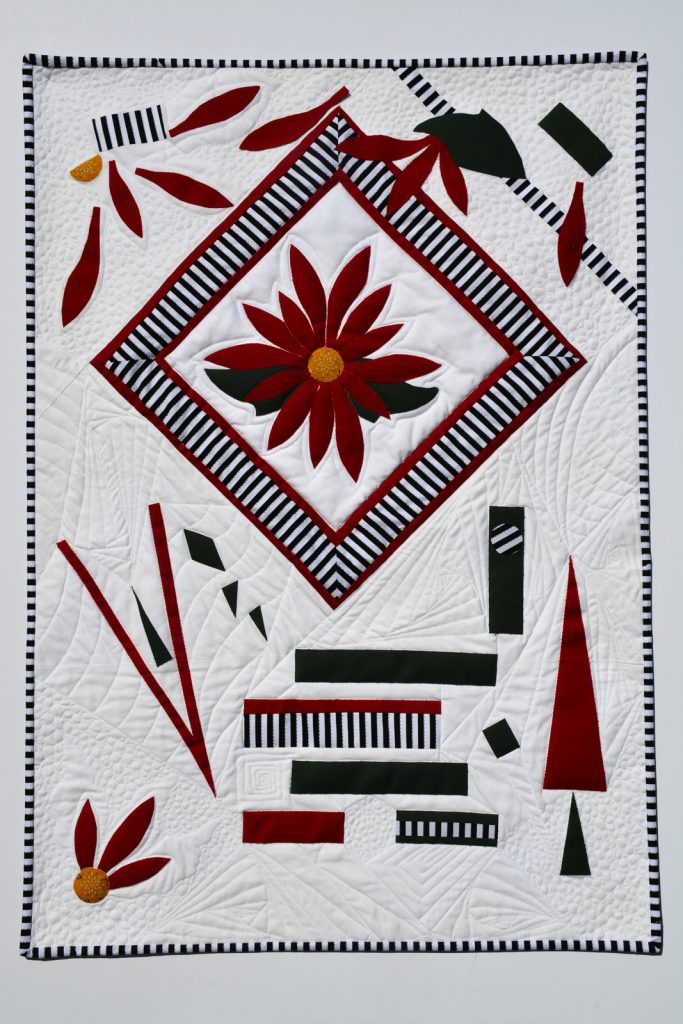
Websters quilts were inspired by her garden, and so many of the quilts in Dialogues also feature botanical images. Poinsettia Paradox by Pamela Burns features one of Webster’s applique designs and then several elements of the design strewn around the quilt. It almost looks like what a design board may have looked like when Webster was creating the pattern.
“It was almost like she was Marie Webster and she was going to try all these designs out,” Lenkowsky said.
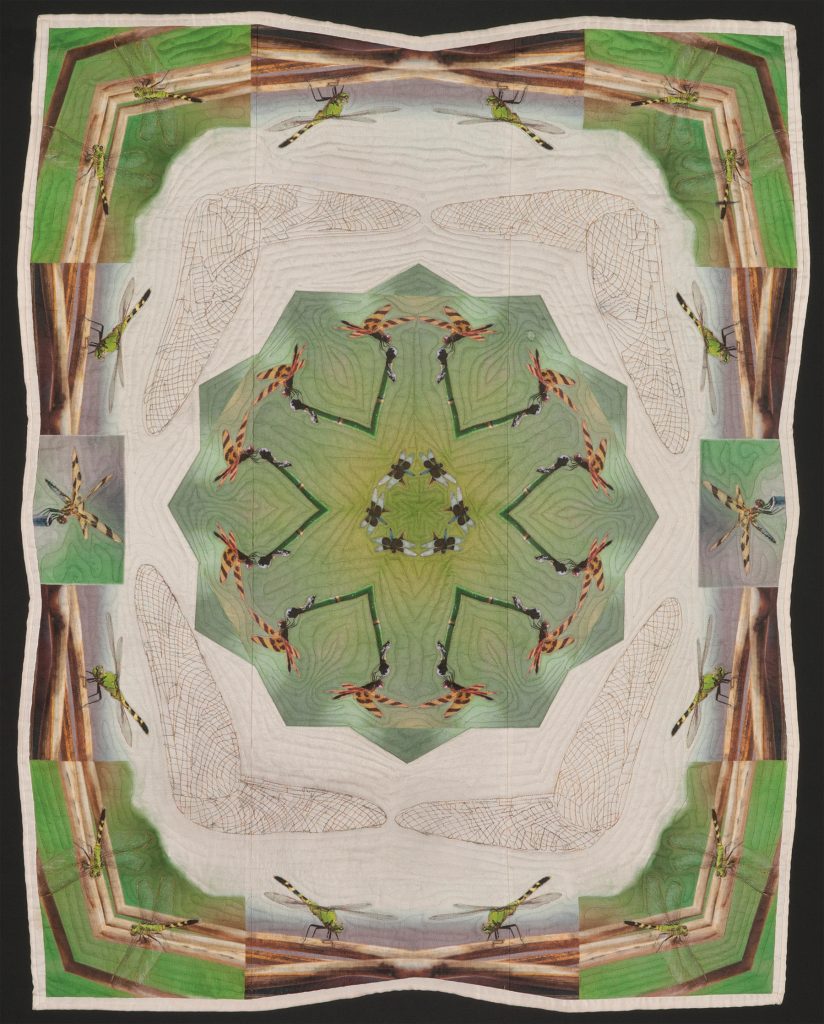
Another quilt, Dragonflies by Barbara Triscari was created using more technical means. Triscari went out to her own garden and took photos of dragonflies, manipulated the photos on the computer to create a symmetric design that almost looks like a kaleidoscope that features the dragonflies throughout. And those stunning wings in the negative space surrounding the center medallion, those are quilted in.
“The dragonflies, it’s a very interesting one,” Lenkowsky said. “It’s not something that, because of the color, immediately grabs your eye but all our quilts don’t do that, and that sometimes bright colors attract to you, but the art isn’t as good as it might be. It’s not just color that’s important in quilt art.”
Other quilts feature poppies, one of Webster’s signature designs, tap into her sense of experimentation with quilt design, and feature a variety of traditional and new quilting techniques made possible by changing technology.
“The artists who respond to this work had to think about working in another way, using elements that they had never thought about or used before,” Lenkowsky said. “It’s been a good experience for them.”
Learn more about “Dialogues” by listening to Lenkowsky on Episode 4 of Sit & Sew Radio, or visit SAQA for information on how to visit the Indianapolis Museum of Art.


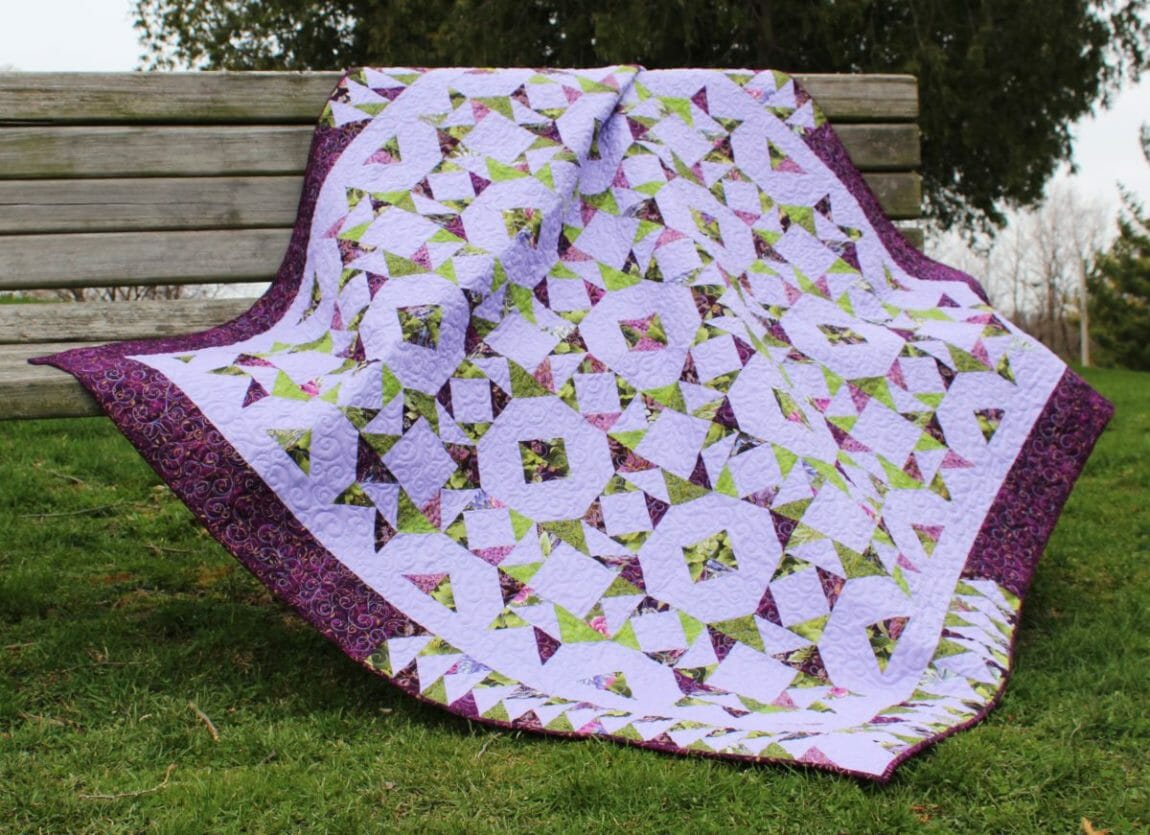
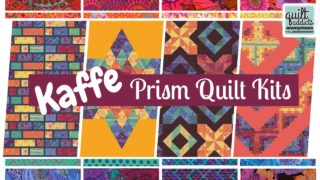
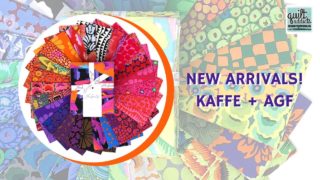



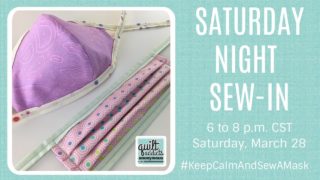
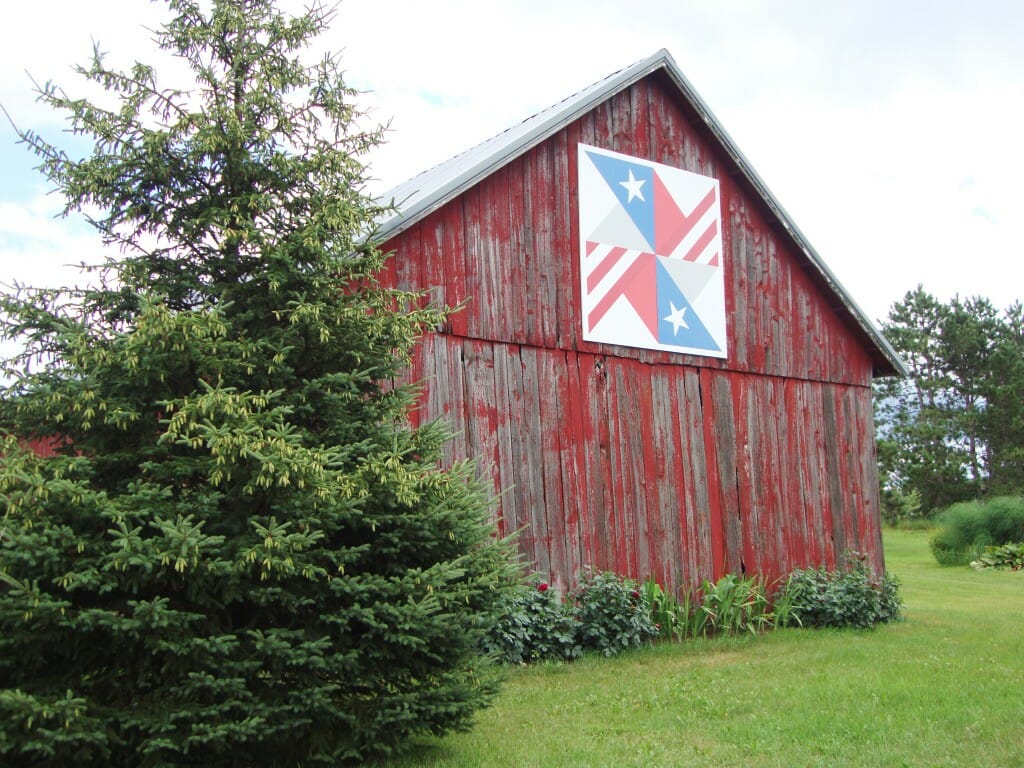

“Just because there are some vocal religious people in the South doesn't mean they are shaping education policy in any significant way.”What Texas selects for textbooks has a huge influence on what's available to the rest of the country. That once came down to two not-very-bright ideologues, Mel and Norma Gabler.“Our science is being restricted by the shape of our politics between two non-scientific thinking groups.”Too true. And like the suppression of Darwinian evolutionary theory in the Soviet Union, we can only come to grief because of it.